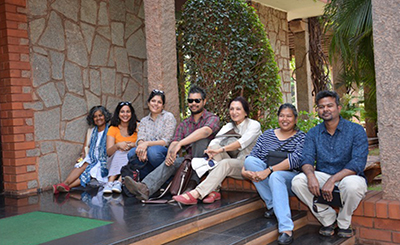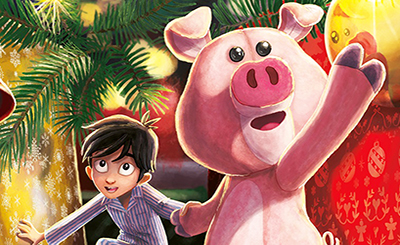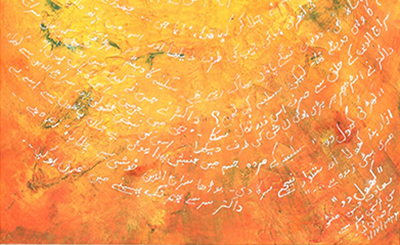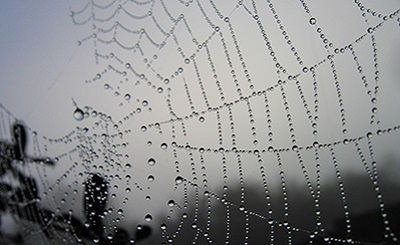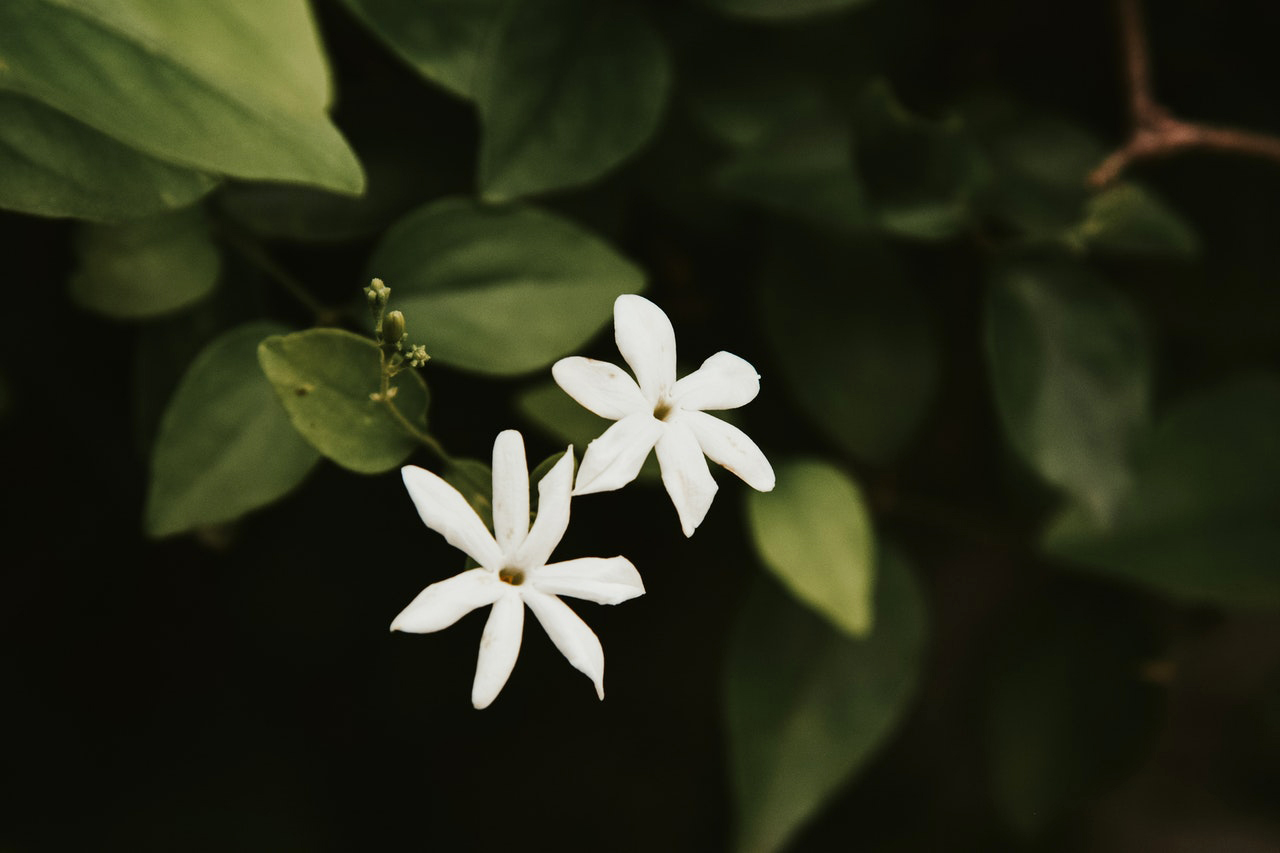
I have worn flowers in my hair for as long as I can remember.
We were proud Bombayites, but retained the culinary, sartorial and cultural habits that were part of our Tamilian heritage. Amma wore flowers, so did my aunts and cousins. It was an important part of our look, much like bindi, kajal, etc. Every morning at 6, M.S. Subbulakshmi singing the Vishnu Sahasranamam would startle me out of slumber (Appa’s strategic way of waking us up). Amma would oil my long, frizzy hair with a generous amount of coconut oil, make two braids and finish the task with a flourish and a ribbon, usually red. She would then attach a string of jasmine to my braid with a hairpin, known as a slide that she always seemed to be armed with. Women of a certain age like her, addressed as Mamis (aunties), were the repositories of slides, safety pins and huge doses of advice that were willingly dispensed. The flowers, neatly packed in leaves and tied up with string, were dropped off at our home every evening by a boy on a bicycle. Amma kept them wrapped in wet cloth so they stayed fresh until the next morning.
Most other girls in my school wore flowers, bindi and kajal like me and no one thought that the look clashed with the western vibe of grey pinafore and white shirt, which was our school uniform. Flowers were many things, an auspicious accessory, a symbol of matrimony like the mangalsutra, an expression of a husband’s love for his wife, a gift offered to women when they visited homes of friends and relatives. Extra flowers were bought and worn during festivals, birthdays and other occasions. A string of jasmine was offered to female guests at the entrance to the venue during weddings, which they deftly tucked into their braids as they walked in.
Over the years, Bollywood movies and our newly acquired black and white Dyanora TV opened my world to the sight of fashionable women with their straight, non-oily hair sans flowers, trendy salwar kurtas and churidars and their makeup. I decided that the flowers in hair had to go. Amma was shocked at this blatant rejection of “our culture” and refused to listen to my pleas. I was too timid to go against her diktat, so I would just unpin the flowers from my hair in the school bus and hide them away in my bag. That’s as far as my rebellion went. It would take much courage and a few more years to completely dump the flowered look.
College meant freedom from the school uniform and I happily joined the churidar kurta clad hordes that thronged the hallowed halls. I stayed with the look through my work years, too. I got married in my mid-twenties and moved to a new city, New Delhi, to join my new husband, new workplace, new home and a totally different culture. I quickly got used to speaking the Delhi Hindi, falling back to the comfort of speaking Bombay Hindi only over phone calls with my siblings and friends in Bombay. Our house help spoke Haryanvi, which proved a bit of a challenge. She said once, Bibiji kabhi mujhe bhi khila do na yeh chawal ke pakode. It took some work to figure out that she was referring to the idlis that I made for our tiffin, and that she had never seen idlis before.
Women in north India didn’t wear flowers in their hair and there were no flower sellers on the streets. There were kiosks that sold flowers of the long-stemmed variety though. I fell in love with the fragrance of Rajnigandha, which would often find its place in vases in my home.
One day I landed up in a home salon in Malviya Nagar on a whim and decided to get my hair chopped. Parlour aunty hesitated, but finally cut my hair short, in steps, quite chic for those times. Amma had always forbidden me from getting a haircut saying long hair looks beautiful on girls. Do whatever you want after you’re married was her constant refrain. Well, I went ahead and did exactly that. I started wearing lipstick and with that I thought my transformation was complete, leaving no trace of the Madrasi me. The lipstick prompted remarks at work like, Achha aap married ho? Lagte nahin ho! Wearing lipstick was a symbol of matrimony, I learnt then. I made friends at work soon and found my place in one of the “lunch groups”. We ate together, shared food, recipes and snippets of our lives, socialised during our trips to Janpath during lunch break and generally became a part of each other’s lives. I discovered the joys of street shopping, chaat and Keventer’s cold coffee with these women. Weekends were spent with the husband showing me around Delhi, catching a play in Mandi House or a film festival at Siri Fort and exploring the many historical wonders this city has to offer.
On one such weekend, we visited Malai Mandir, a Murugan temple in R.K. Puram. A rich, unmistakably sweet fragrance pervaded the air and startled me with its familiarity as soon as we entered the temple complex. I was greeted by the sight of a flower lady with her wicker basket lined with banana leaves and filled to the brim with long strings of the most gorgeous milky white jasmine flowers. Women and children milled around wearing sarees, pavadais, bindis, kajal and glimmering earrings and nose-pins. They were chatting in Tamil as they bargained, bought and wore flowers in their hair; jasmine, the coral-red kanakambaram and the kadambam, a mélange of flowers strung together. Childhood visits to such temples came to mind and I could almost taste the tamarind rice prasadam and that made me long for Amma, Appa, my siblings and my Bombay home. I found myself asking the lady for jasmine. Ek foot 20 rupees, she said as she measured the string between fingertip and elbow, the standard flower unit. Orumozhammallippoo (jasmine) please, I said as I handed over a 20-rupee note. Oh! Tamil aa? she responded, with a betel-leaf stained grin.
Once back home, I found a slide and wore the string of jasmine in my short hair and kept it on well into the evening and long after the flowers wilted. I started wearing flowers to work too, drawing stares and references of ‘woh madrasan’, which I learnt to ignore. I continued visiting that temple, wearing jasmine in my hair, revisiting and reclaiming a part of my self.
More from The Byword
Comments
*Comments will be moderated
Nice note.. Very nostalgic!
Biju Vishakha
Mar 30, 2024 at 01:51
so nice...so dreamy and with such vivid imageries. Enjoyed reading it!
nisha singal
Jan 14, 2021 at 20:55






